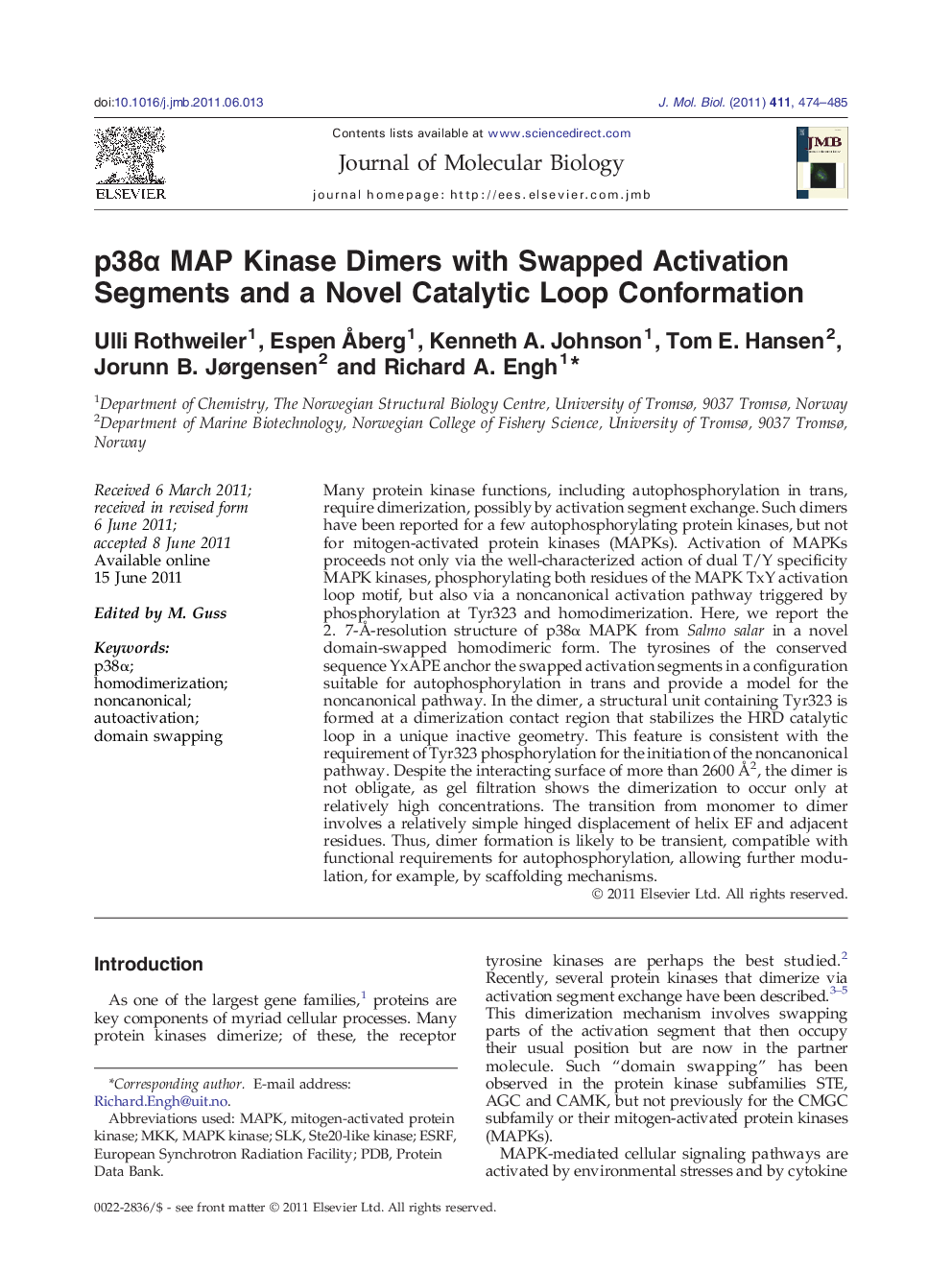| Article ID | Journal | Published Year | Pages | File Type |
|---|---|---|---|---|
| 2185094 | Journal of Molecular Biology | 2011 | 12 Pages |
Many protein kinase functions, including autophosphorylation in trans, require dimerization, possibly by activation segment exchange. Such dimers have been reported for a few autophosphorylating protein kinases, but not for mitogen-activated protein kinases (MAPKs). Activation of MAPKs proceeds not only via the well-characterized action of dual T/Y specificity MAPK kinases, phosphorylating both residues of the MAPK TxY activation loop motif, but also via a noncanonical activation pathway triggered by phosphorylation at Tyr323 and homodimerization. Here, we report the 2. 7-Å-resolution structure of p38α MAPK from Salmo salar in a novel domain-swapped homodimeric form. The tyrosines of the conserved sequence YxAPE anchor the swapped activation segments in a configuration suitable for autophosphorylation in trans and provide a model for the noncanonical pathway. In the dimer, a structural unit containing Tyr323 is formed at a dimerization contact region that stabilizes the HRD catalytic loop in a unique inactive geometry. This feature is consistent with the requirement of Tyr323 phosphorylation for the initiation of the noncanonical pathway. Despite the interacting surface of more than 2600 Å2, the dimer is not obligate, as gel filtration shows the dimerization to occur only at relatively high concentrations. The transition from monomer to dimer involves a relatively simple hinged displacement of helix EF and adjacent residues. Thus, dimer formation is likely to be transient, compatible with functional requirements for autophosphorylation, allowing further modulation, for example, by scaffolding mechanisms.
► p38α forms a homodimer via activation segment swapping anchored by the YxAPE motif. ► The p38α homodimer interactions involve the activating phosphorylation site Tyr323. ► With Tyr323 unphosphorylated, the HRD catalytic loop is disrupted in the dimer. ► The dimer explains the regulation properties of p38α noncanonical autoactivation.
